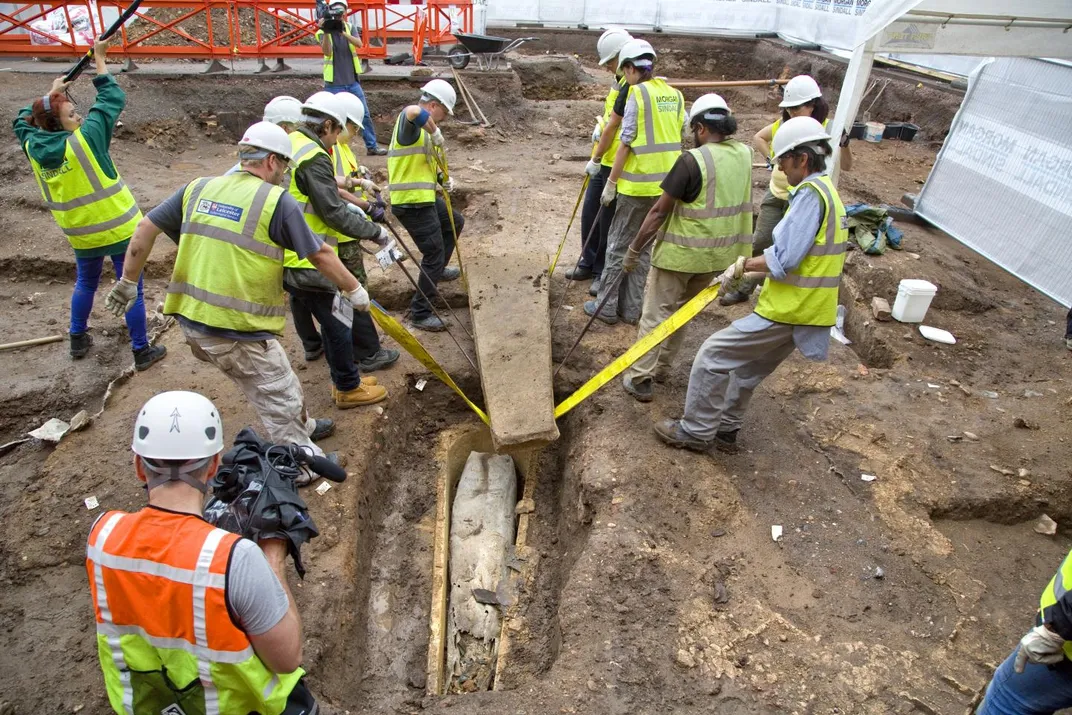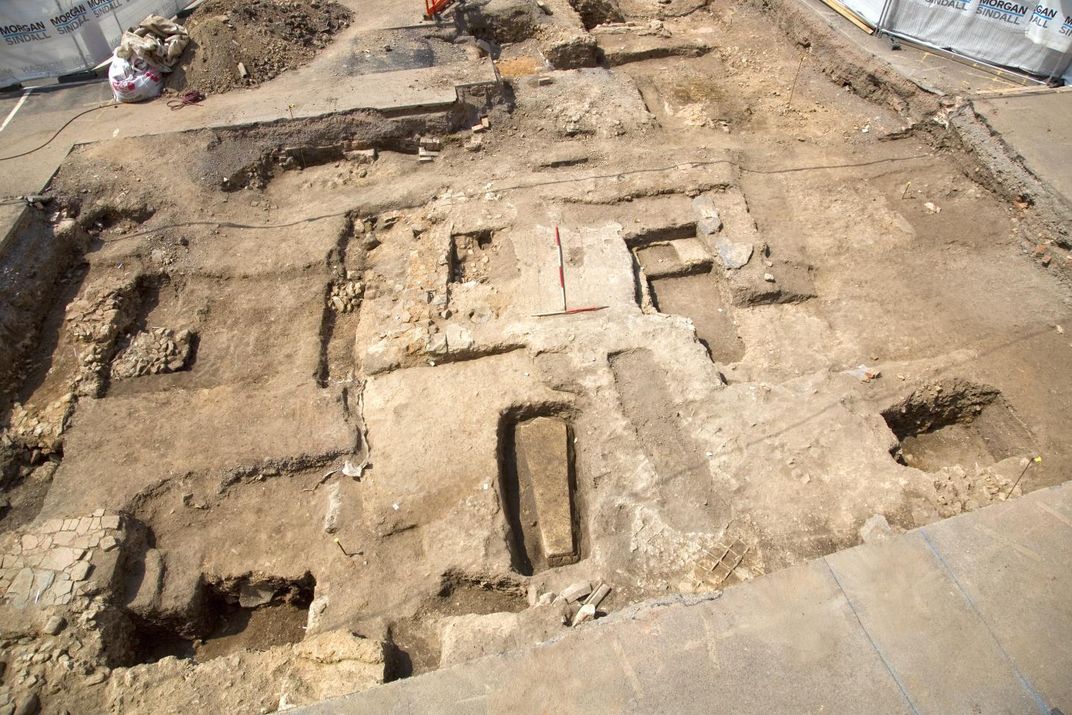Who’s Inside the Lead Coffin Found Near Richard III?
The mysterious identity of a female skeleton discovered in a coffin-within-a-coffin stumps archeologists
/https://tf-cmsv2-smithsonianmag-media.s3.amazonaws.com/filer/fd/af/fdaf0af4-ac70-4ca1-a918-c964662c944a/87511_web.jpg)
In the Leicester parking lot where the skeleton of England’s Richard III was discovered, about a year after the king's skeleton was uncovered, archeologists came upon a whole new mystery—and it’s proved difficult to fully decode.
On a second dig of the site in 2013, not far from the grave of the last Plantagenet king, an excavation team found a large limestone sarcophagus. Inside that, they found another coffin—this one lead and containing the skeleton of an individual whose lavish last resting place indicated a high status and wealth. The grave was once located inside the Greyfriars church, which was built in the 13th century and destroyed in 1538 on Henry VIII’s order.
At first, as Discovery News reports, archeologists and historians speculated the body was likely male and could belong to one of the heads of the English Greyfriars order. But upon evaluation, archeologists found that the skeleton was actually that of a woman who died when she was over 60—a ripe old age in the medieval world.

So who was the lady in lead? Despite research and testing, historians still aren’t sure, and might never be. Radiocarbon dating indicates that she died before Richard III's 1485 burial. Her burial took place sometime before 1400 and could date to as early as the mid 1200s, not long after the friary was established—which means she could have been an early benefactress of the institution.
The closest that researchers have come to putting a name to the remains comes from 700-year-old documents from the region, which cite a woman named Emma who was married to a John Holt. A bishop at the time issued an indulgence for those who prayed for her soul, and note that her “body is buried in the Franciscan church in Leicester.” It’s as good a clue as any.

"We know little about her,” said Mat Morris, the dig’s archaeological lead, “and a lack of fundamental information, such as her age at death, what she did for a living, what she looked like or where in the church she was buried, coupled with no known descendants who can provide a DNA sample, make it impossible to say for certain whether one of these skeletons is that of Emma, or indeed anyone else. Sadly, they will forever remain anonymous."
The lady's grave is one of 10 discovered at the site during the 2013 dig, and of the five that have been excavated (including Richard’s, discovered the year before) four have been women. Experts say this is unusual for medieval church burials, which are either dominated by men or equally dispersed between genders. But the dig team cautions that the finds represent only a small fraction of the remains likely to be found at the site.
The other women add further intrigue to the mystery, however, and could reveal new information about medieval social order. Two of the skeletons showed signs of hard physical labor, and researchers believe they were likely middle class patrons of the church. This suggests that, as Morris points out, “the friary's main source of donations came from the town's middle-classes, merchants and tradespeople who were probably of more modest means, and worked for a living."
“The discovery is going to add important insights into the interaction of women and the religious orders in the medieval period,” he told Discovery News.
/https://tf-cmsv2-smithsonianmag-media.s3.amazonaws.com/accounts/headshot/lauraclark.jpeg)
/https://tf-cmsv2-smithsonianmag-media.s3.amazonaws.com/accounts/headshot/lauraclark.jpeg)